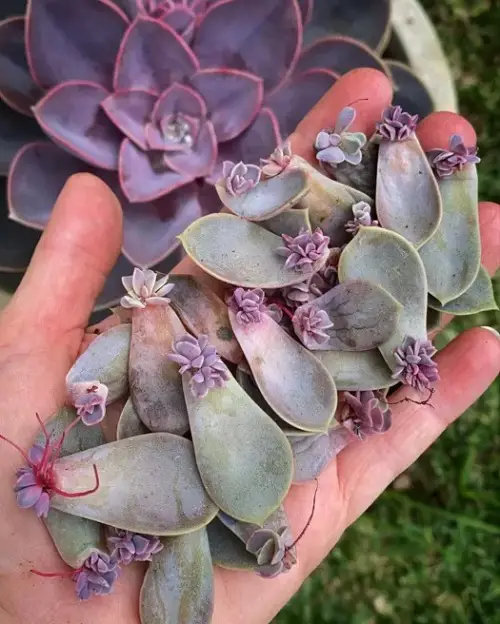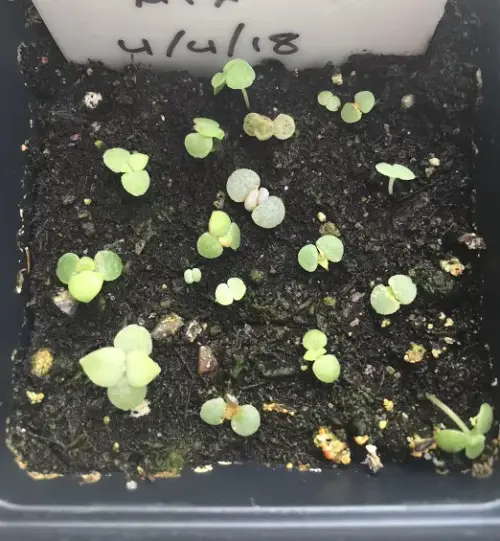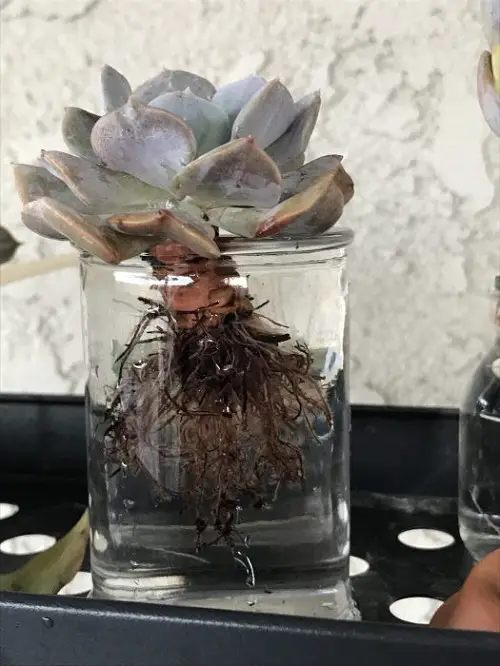We’ve got all the Ways to Propagate Hens and Chicks so you can successfully grow these hardy succulents without any fuss!

Hen and Chick plant propagation is easy and doesn’t need much work. Don’t worry; we’ll tell you how to do it in different ways and which is the easiest.
Hens and Chicks Plant Information
Hens and Chicks are also known as House Leeks and are succulents with a mat-like growth pattern. They are arranged in beautiful rosettes with a big one in the center–the hen. And smaller ones around it–the chicks.
These succulents are really resilient and can be easily propagated to add to your lawn or container garden. But first, let us clear up a confusion that many people have.
Are Both Sempervivum and Echeveria Hens and Chicks?

Yes! Sempervivums and Echeverias are both called “Hens and Chicks” and are different genera of succulents. They’re called by the same name because Hens and Chicks is used as an umbrella term for any kind of succulent that produces offsets or small rosettes around a main plant.
Just like a mother hen with its chicks. So don’t worry; you can find and grow many different kinds of Hens and Chicks.
Best Ways to Propagate Hens and Chicks
1. Growing From Pups

The first method for hens and chicks propagation is Division. It is the easiest way to propagate Hens and Chicks. So what is it?
All you need to do is separate the offsets (the chicks) and plant these in another pot. Slowly, they’ll turn into the Hen and produce their own chicks.
Just look for a mature plant that has offsets or pups and pick these out. They’ll have their own leaves and roots. Pluck the chick with your bare hands and let them callous for a day or two. After that, you can plant them in the soil or a pot.
Make a small hole and place the pup inside it. Then place this pot in a sunny window, and it’ll start thriving. Don’t forget to water it.
2. Leaf Cuttings
You can also propagate these plants by cutting the leaves. It’s also simple but takes some work. All you need to do is remove a few leaves of these succulents and plant them separately.
Take a few healthy leaves from the main plant. You can twist these off or cut them, but make sure they’re big–at least 1/2 inch.
Once you have the leaves, put them in a tray filled with potting mix or a paper towel and then keep it in a warm and dry place. Mist them every now and then, and in a few weeks, these leaves will develop the roots.
You’ll have to be patient when propagating hens and chicks this way.
3. Seed Propagation

Don’t worry if you can’t find one of these near you to get the leaves or pups from. You can always grow these the old-fashioned way–from seeds.
Get the seeds from a good plant store online or a nursery near you. You can choose any variety you like. The seeds are tiny, so you’ll need a shallow container for them.
Seed trays also work well. Plant these in a potting mix made of soil, coarse sand, and perlite, and give them a bit of water. Now, keep this tray on a windowsill that gets filtered sunlight.
All you need to do is care for it, and it will slowly grow into a beautiful Hens and Chicks specimen.
4. Propagate it in Water

For Echeveria Hens and Chicks, you can also go with water propagation.
Pick out a few healthy leaves that are plump and let them callous. Then, you just have to put it in a bit of water.
A jar that’s filled halfway would be great. Only go for fresh water and make sure only the bottom of the leaf stem is submerged.
Place it in a bright location indoors, and soon; you’ll see roots growing from the leaves in a few week’s time.
5. Stem Cutting Idea

There’s also stem cutting propagation for Echeveria Hens and Chicks. The steps are the same, though.
Take a small cutting and leave it undisturbed so it can callous. Once it has done that, plant it in a succulent or cactus mix and mist it.
Keep it in bright light and give it a bit of water every couple of days. It might take weeks or even months, but soon, you’ll have a cute little Hens and Chicks plant.
Taking Care of Hens and Chicks After Propagation
Once you’ve propagated your Hens and Chicks, it’s time for care so it grows into a healthy plant. Here are some tips to help you out.
- Ease up on the watering because they’re drought-tolerant. Let the soil dry out completely before you water them again.
- Hens and Chicks can grow in full sun and partial shade so choose a place that gives them just that.
- If you ever notice wilted or dry leaves, remove them because they’ll attract pests.
- You don’t need to fertilize Hens and Chicks growing in pots. But if they’re in the garden bed, you can give them a little bit of succulent fertilizer.


